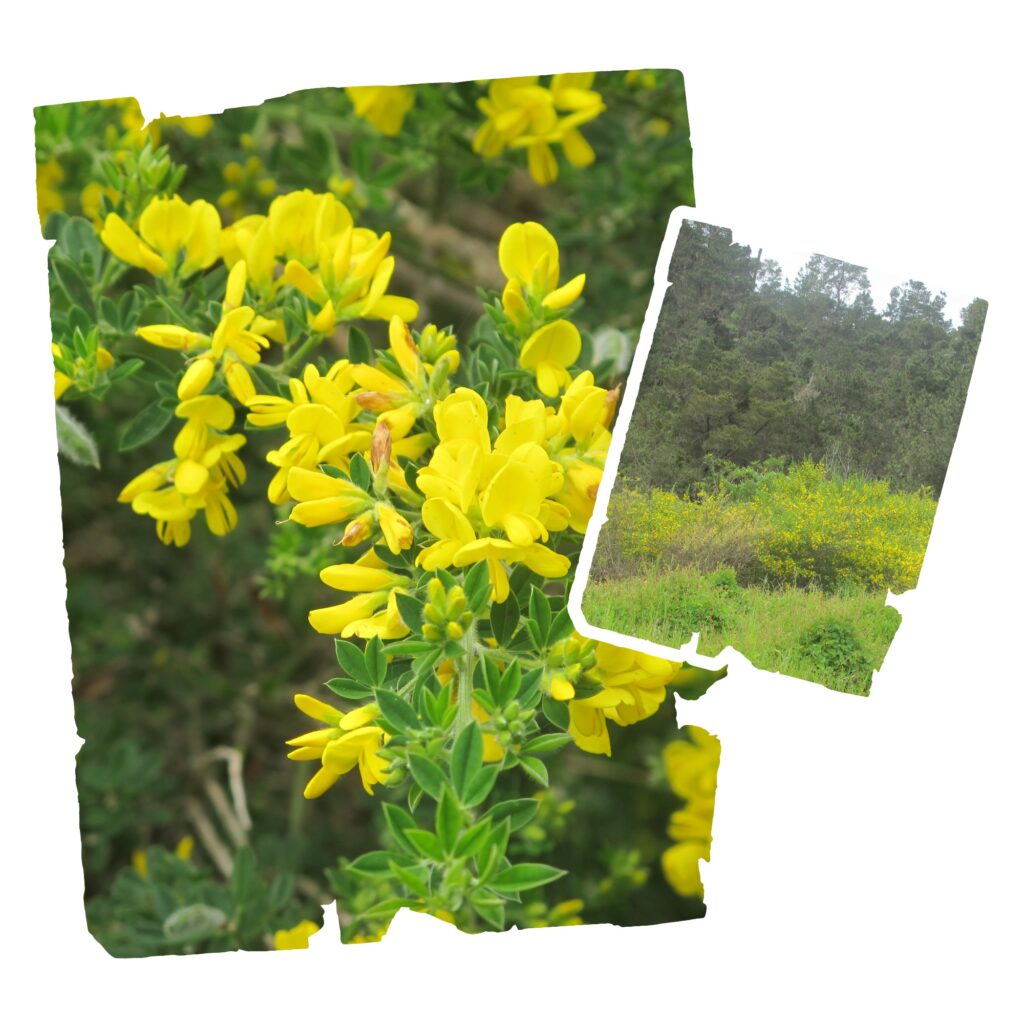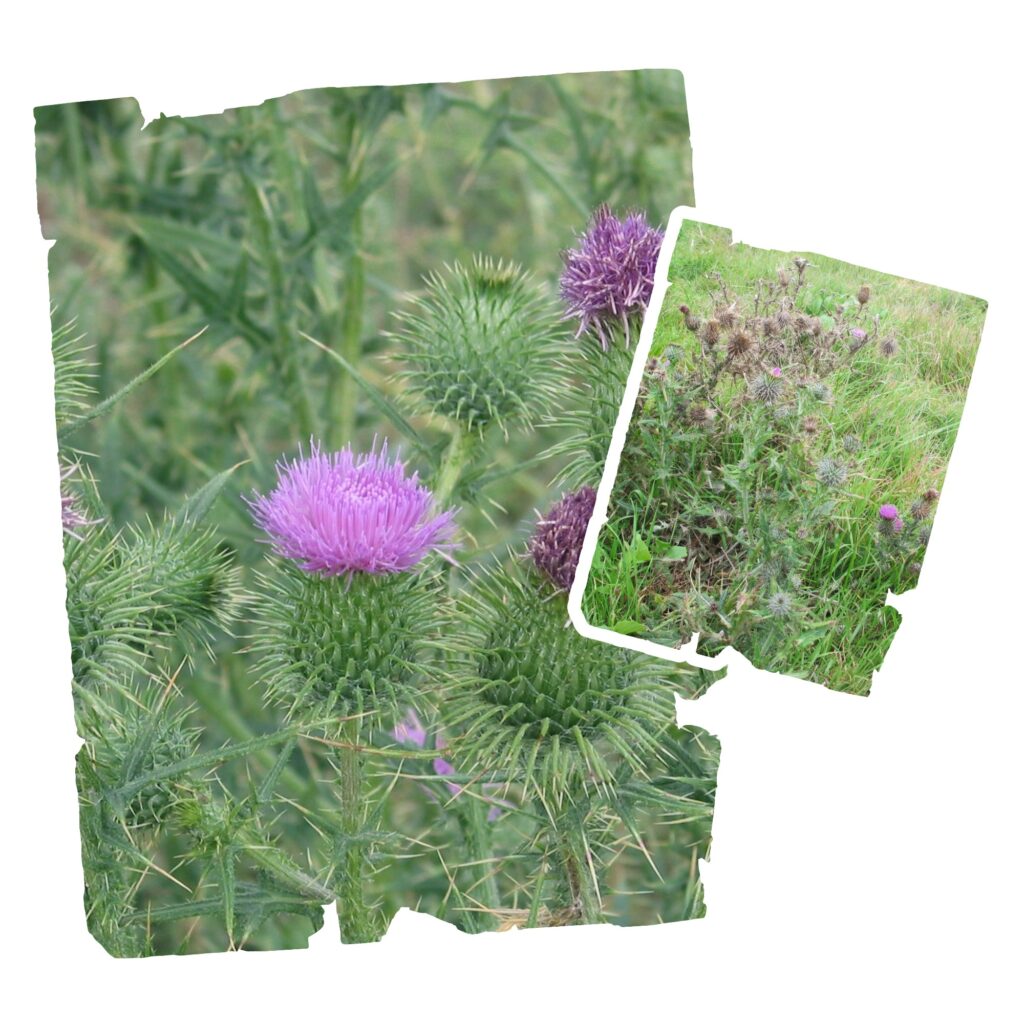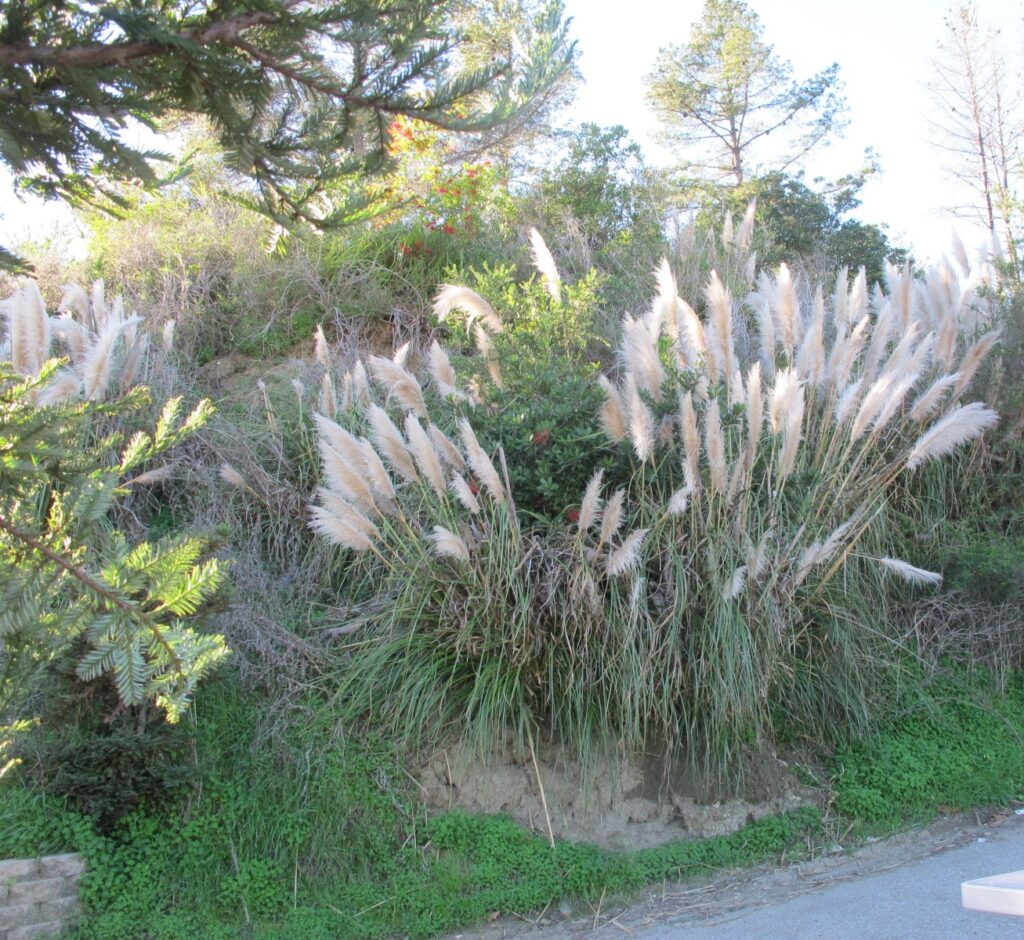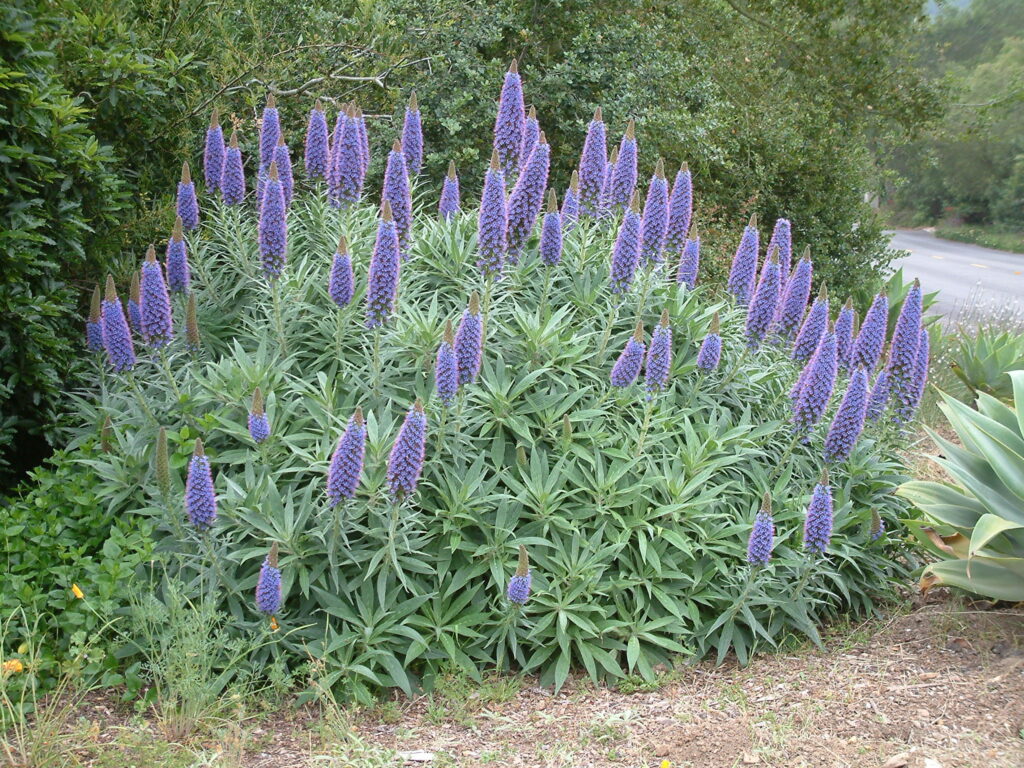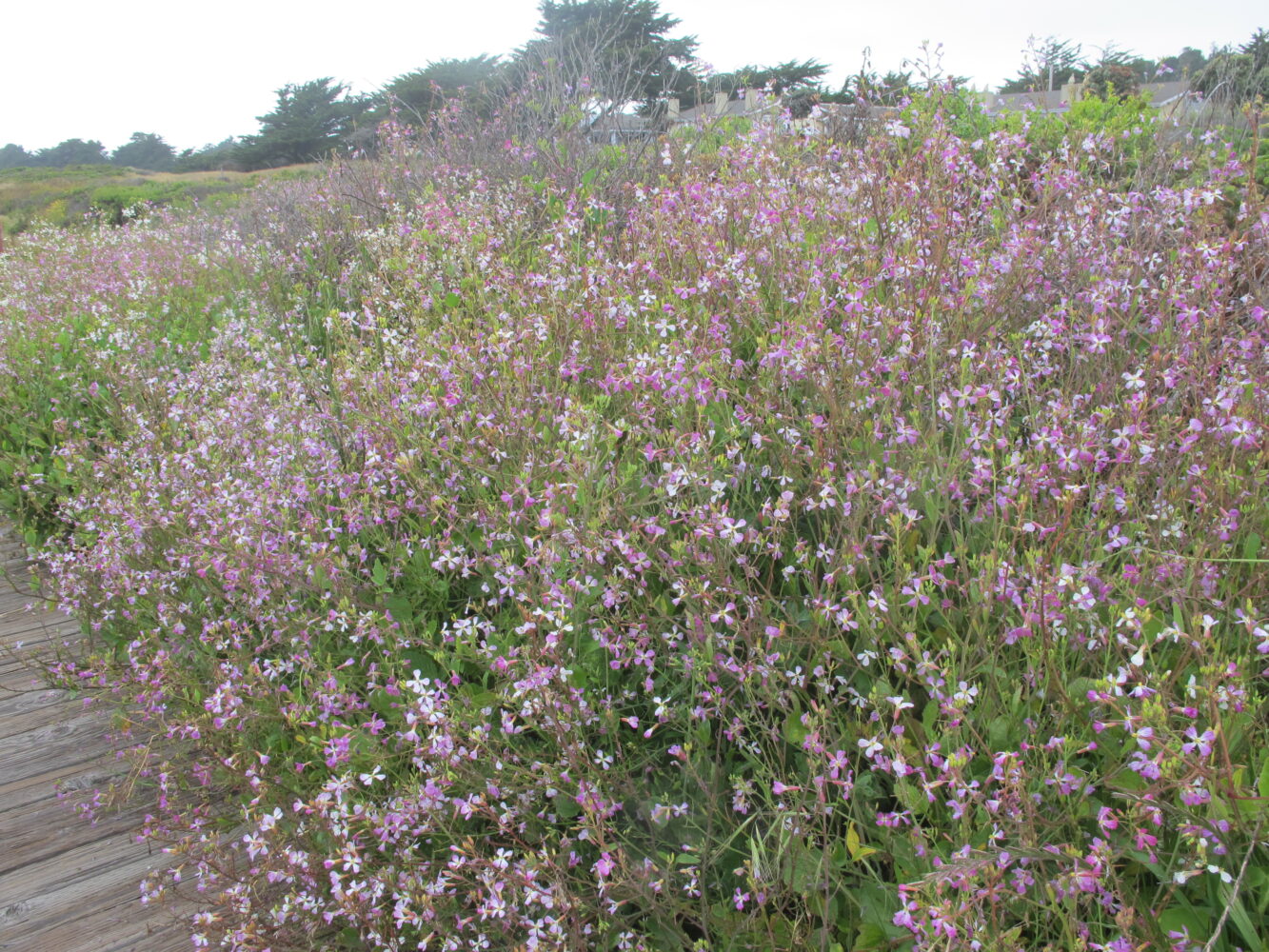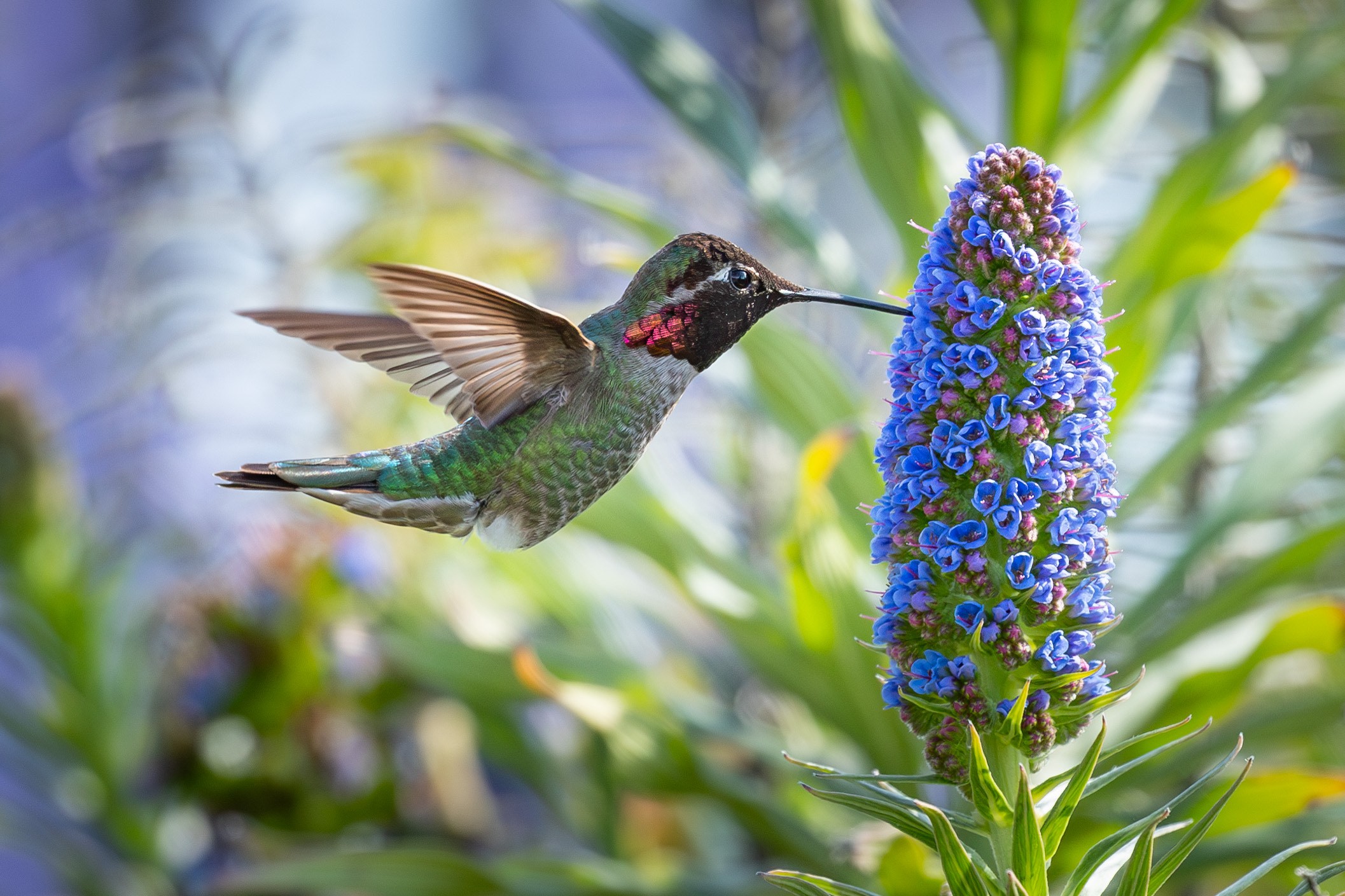By CHRISTINE HEINRICHS
Wild Radish is an annual in many places, but in Cambria plants often survive more than one season. They get bigger and grow stems 2 to 3 inches in diameter. Wild Radish rapidly fills in disturbed areas. The small flowers turn into seed pods containing many seeds. The hard, dark, oval seeds contained in the pod are viable for at least five years and possibly as long as 20.
Wild Radish flowers are white to purple, and occasionally yellow. Do not be fooled—it is still the same problem. The root grows long, even on young plants, and get thicker with age. Roots may grow to the size of a tuber. (The author of the article says she tried eating it and it tastes like dirt.)
To get rid of it, pull plants up by the roots, or cut them off as close to the root as possible. It occasionally resprouts from the cut root, so follow up and cut it again later in the season. Often the root dies and can be removed on a following visit.
Dispose of the plants and roots by bagging and removing it. Allowing it to wilt for a day or two will make removal easier. Plants without seed can be composted or left to decompose on the site.
Sour grass (Oxalis pes-caprae) (first photo below) carpets the hills in bright yellow flowers, a cheerful sign of spring. It has bright green leaves like shamrocks with bright yellow flowers that appear November through March.
Unfortunately, that carpet of Oxalis is outcompeting the variety of native plants that should be living where it grows. It establishes a monoculture of plants that are not tasty to indigenous wildlife; thus, they must find different pastures for food they can eat. It inhibits germination of native plants. It is slightly toxic; however, gophers and ground squirrels may eat it and even store it, planting bulblets that will expand its territory.
Oxalis reproduces by the bulblets produced along its roots. Hand-pull it to manage it in small areas, but large-scale control is difficult to achieve. Scrub jays and pocket gophers have been seen carrying the bulbs and planting them. Herbicide spraying works–follow directions on the container carefully.
Nasty invasives may be colorful and pretty, but they ruin local plant and wildlife ecosystems. Do not let their bright purple and yellow flowers lead you to planting them in your garden. California’s Invasive Plant Council has a website with suggestions for alternatives at:
cal-ipc.org/solutions/prevention/landscaping/dpp/?region=centcoast
Make sure your property is not harboring these invaders.
French Broom (Genista monspessulana) and its cousins, Scotch, Spanish, and Common Broom, are all exotics that were sold as ornamental landscaping plants. One medium-sized shrub can produce over 8,000 seeds, which are soon growing in the neighbor’s yard.
French Broom grows as tall as 15 feet, although most are six to ten feet tall. See it blooming bright yellow along Highway 1. Its height makes it a ladder fuel for fire, which can climb right up. The toxic alkaloids in its leaves and seeds make it worthless as wildlife or livestock forage.
Its pretty yellow flowers look like pea flowers. The leaves are in clumps of three. Its shiny black seeds are in pods. Empty seed pods curl up.
To get rid of it: If possible, pull the plants. If they are too big to pull, cut them down. Girdling the trunk on large plants will kill them, but they remain flammable. Put them in the green waste bin. Reduce spread by controlling seeds. Remove the flowers and dispose of them in the green waste bin.
Bull Thistle (Cirsium vulgare) has pretty pink to purple flowers that bees like, but it also has thorny stems. Ouch! If it gets into hay, horses and cattle will not eat it. In its first year, it is a rosette of leaves flat on the ground. In its second year, a stem bolts up to flower. It may grow six feet tall, with many stems and flowers. The seed head produces tens of thousands of downy seeds that cover the ground around the plant and, as in Clement Clarke Moore’s traditional poem, A Visit from St. Nicholas, “…and away they all flew like the down of a thistle”.
Protect your hands. Mow it, cut it, or pull it. Cutting it close to the ground usually kills it, but seeds can live ten years. They keep sprouting. Keep pulling.
Pride of Madeira, Echium candicans, is an evergreen shrub that can grow three to six feet or taller, with candelabra-like blue-violet flowers on side shoots. Those flowers produce huge numbers of seeds that disperse and start new plants. While bees, butterflies, and hummingbirds are attracted to its large, multiple flowers, they are better off relying on local sources of nectar, such as Sticky Monkeyflower. It is poisonous to humans, dogs, cats and horses
It is best to remove these plants when they are small. Use gloves to pull it out–the leaves are kind of bristly. Removing the blooms, especially before they go to seed will help control it. If they have already gone to seed, cut them off the seed heads anyway, bag them, and dispose of them in the green waste cans to reduce fire danger.
Pampas Grass, (Cortaderia selloana), is topped with graceful feathery blooms. Each one produces up to 100,000 seeds that are widely dispersed by wind and develop without fertilization. Its big, showy clumps, five to seven feet tall, are highly flammable and increase fire danger.
This nasty invasive is so difficult to remove that local lore says prison crews were relieved of removing it on grounds of cruel and unusual punishment. Thick gloves are needed to protect gardeners from the sharp, sawtooth-edged leaves. Ideally, cut down large plants and remove the root mass. Professional help may be needed to get rid of the plant, as it may require a machete or chain saw to completely remove the plant. Short of that, reduce the spread of Pampas Grass by removing the plumes. Bag them first to contain those seeds and dispose of them in the green waste can. Be persistent. New plumes may bloom.
Cambria Community Services Board Director Michael Thomas contributed to the revised Invasive Weed Guide through his experience in his work at Fiscalini Ranch Preserve. Director Thomas takes a special interest in parks and open space and has led the Wednesday Weeders to remove weeds from the ranch for several years. To join this volunteer effort, go to: fiscaliniranchpreserve.org/connect/volunteer/. The new edition adds several invasive grasses to the 20 that were included in the 2017 book. Each weed is pictured with suggestions for removing or controlling it.
Cambria’s Invasive Weed Guide is available from Crosby Swartz at: crosbyswartz99@gmail.com, and Christine Heinrichs at: Christine.heinrichs@gmail.com, for a $15 donation to the Cambria Forest Committee.

